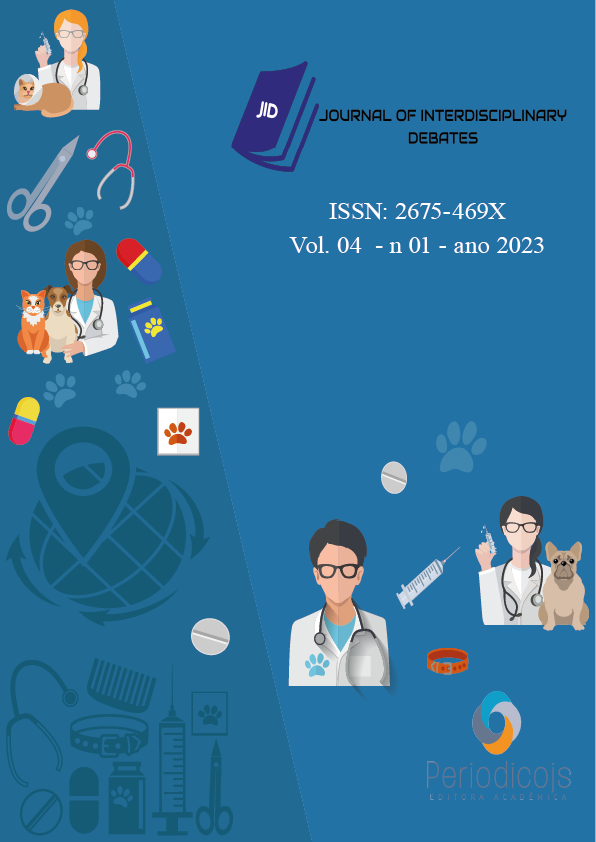Abstract
Technology is present in the world so that its use becomes intuitive. The purpose of the study originated from the perception of people, especially young people who use technology practically all the time, but many of them do not use it to develop. In this case, the need to implement computing teaching in schools increases. The introduction of computing concepts from the early years of basic education gains a lot of importance. Computational thinking instructs people how to think about solving problems through concepts in the field of informatics. The unplugged activity presents great computing concepts, even without the need to use electronic devices, being an effective alternative in teaching. The method used is based on bibliographical reading on the subject and use of resources such as data show, cardboard, markers, cardboard, paper, glue, bond sheets and notebook. The general objective is to present the computer language and its importance by experiencing it in practice through the suggested games. As specific objectives, instigate students to learn by playing, increase interest in subjects such as mathematics, physical education, science, art and the Portuguese language, practice the programming language in known games in an interactive and unplugged way. As expected results are to contribute to computational thinking to become present and worked in schools in order to reframe the school teaching and learning process.
References
Alves, L. R. G. Nativos digitais: games, comunidades e aprendizagens. In: U. C. de Moraes (Eds.). Tecnologia educacional e aprendizagem: o uso dos recursos digitais (pp. 233-251). São Paulo: Livro Pronto. 2007
BARCELOS, T. S.; SILVEIRA, I. F. Teaching Computational Thinking in initial series An analysis of the confluence among mathematics and Computer Sciences in elementary education and its implications for higher education. p.1–8, 2012. IEEE. Disponível em: http://ieeexplore.ieee.org/document/6427135/. Acesso em: 05 jul. 2020
Belloni, M. L., & Gomes, N. G. (2008). Infância, mídias e aprendizagem: autodidaxia e colaboração. Educação & Sociedade, 29, 717-746, 2008.
BOUCINHA, Rafael Marimon et al. Construção do pensamento computacional através do desenvolvimento de games. Revista Novas Tecnologias na Educação, Porto Alegre, v. 15, n. 1, 2017.
BRACKMANN, Christian Puhlmann. Desenvolvimento do pensamento computacional através de atividades desplugadas na educação básica. 2017. Tese (Doutorado em Informática na Educação) - Universidade Federal do Rio Grande do Sul, Porto Alegre, 2017.
DELGADO, C. A. D. M. et al. Identificando competências associadas ao aprendizado de leitura e construção de algoritmos. In: XIII Workshop sobre Educação em Computação, 2005, São Leopoldo. XXV Congresso da SBC. Porto Alegre - RS: Editora SBC, 2005. v. 1. p. 2371-2382.
FRANCISCO, J. F. “Informática na Educação nas Séries Iniciais do Ensino Fundamental”, 2011 - disponível em https://acervo.plannetaeducacao.com.br/portal/artigo.asp?artigo=2089, acessado em 05 jul. 2020.
GENIOL. Tangram. [S. l.], 2020. Disponível em: https://www.geniol.com.br/raciocinio/tangram/. Acesso em: 7 jul. 2020.
MARÇAL, Edgar; ANDRADE, Francisco Ari de (org..). Gestão, Ensino e Tecnologias: Práticas Docentes, Experiências e as Tecnologias Digitais. Campinas: Pontes Editores, 2016.
MATTAR, J. Games em educação: como os nativos digitais aprendem. São Paulo: Pearson Prentice Hall.2010.
PERRENOUD, P. Práticas pedagógicas, profissão docente e formação: perspectivas sociológicas. (H. Faria, H. Tapada, M. J. Carvalho e M. Nóvoa, Trads.) Lisboa: Dom Quixote. 1997.(Trabalho original publicado em 1993)
PRENSKY, Mark. Digital game-based learning. New York: McGraw-Hill, 2001.
RESNICK, m. et al. Scratch: programming for all. Communications of the ACM, v. 52, n.11, 2009.
RESNICK, Mitchel. Mitch Resnick: Vamos ensinar as crianças a programar. 2012
RESNICK, Mitchel. Aprender a programar, programar para aprender. [S. l.], 1 jun. 2013. Disponível em: http://eduteka.icesi.edu.co/articulos/codetolearn. Acesso em: 19 jun. 2020.
SCAICO, Pasqueline Dantas et al. Ensino de Programação no Ensino Médio: Uma Abordagem Orientada ao Design com a linguagem Scratch. Revista Brasileira de Informática na Educação, [s. l.], ano 2013, v. 21, n. 2, p. 92-103, 26 jun. 2013.
SECRETARIA DE EDUCAÇÃO DO ESTADO DO PARANÁ. Pensamento Computacional. [S. l.], 2020. Disponível em: http://www.educadores.diaadia.pr.gov.br/modules/conteudo/conteudo.php?conteudo=1625. Acesso em: 5 jul. 2020.
TICON, Sabrina Cota da Silva. Atividades Plugadas e Desplugadas na Educação Infantil no Aprendizado do Pensamento Computacional. 2020. 154 p.Dissertação (Mestrado em Novas Tecnologias Digitais na Educação) - Centro Universitário UniCarioca, Rio de Janeiro, 2020.
Valente, J. A. Informática na educação: instrucionismo x construcionismo, UNICAMP/NIED Campinas, 1997.
WING, J. M. Computational thinking. Communications of the ACM, v. 49, n. 3, p. 33, 2006.
WING, J. M. Computational Thinking: What and Why?, 17. Nov. 2010. Disponível em: http://www.cs.cmu.edu/~CompThink/resources/TheLinkWing.pdf. Acesso em: 05 jul. 2020.





